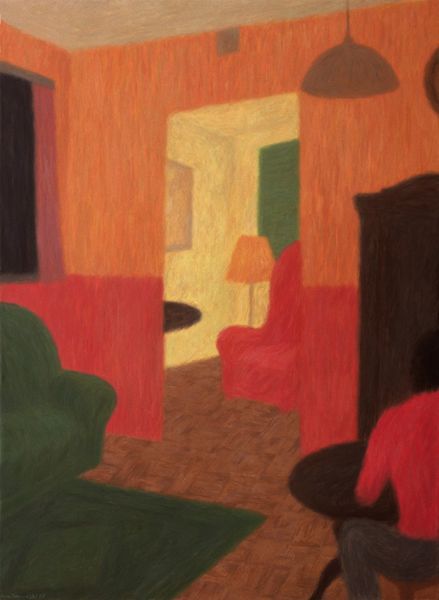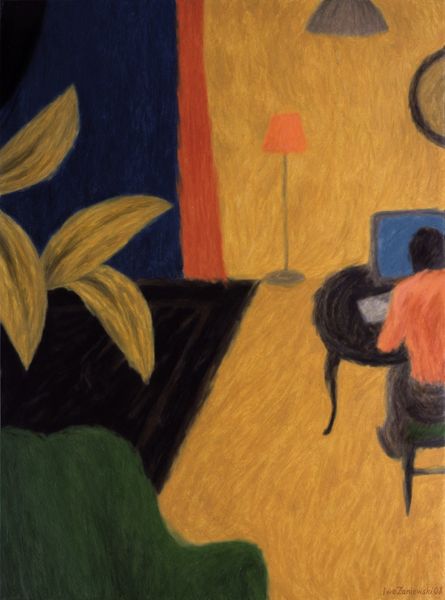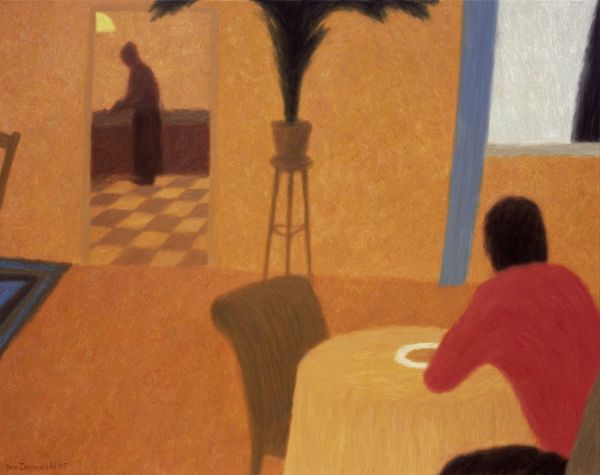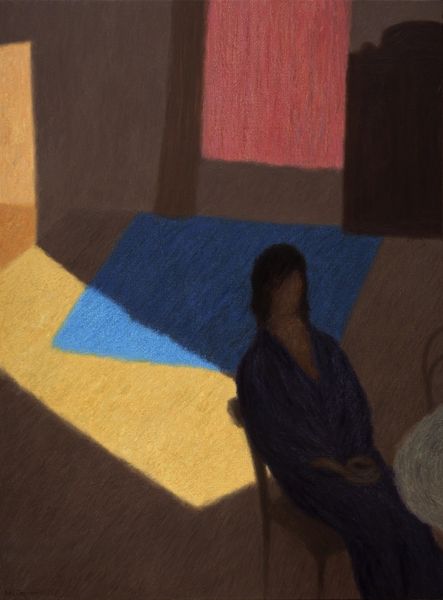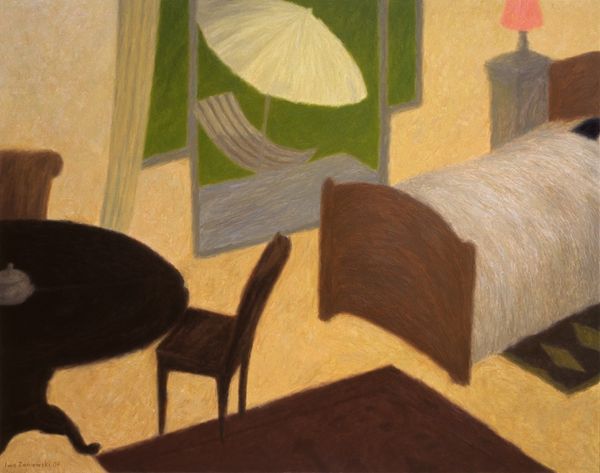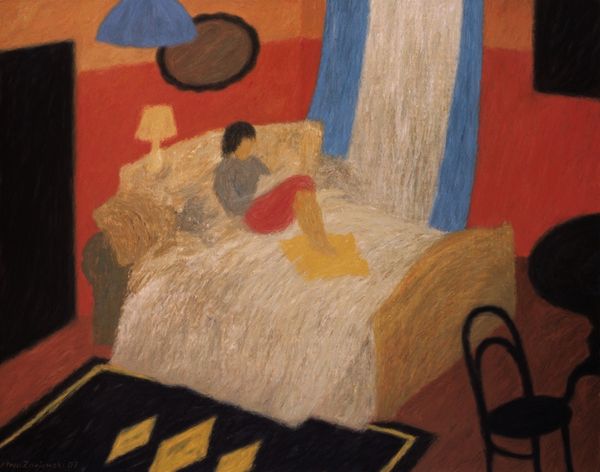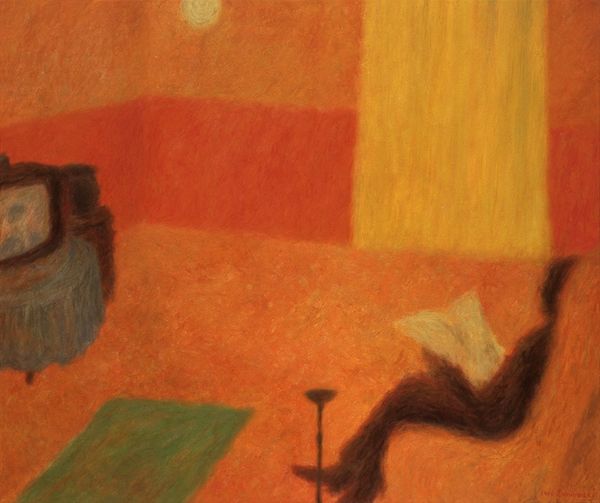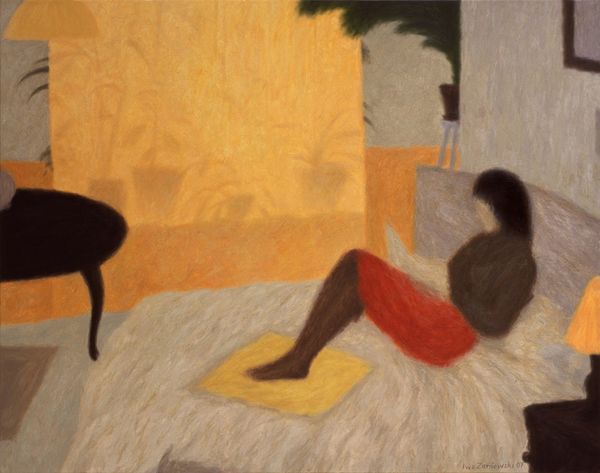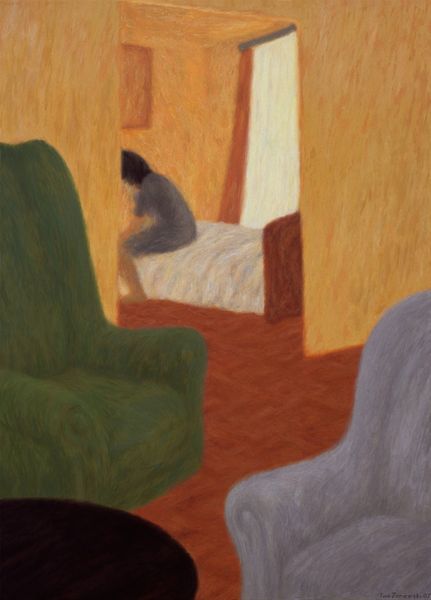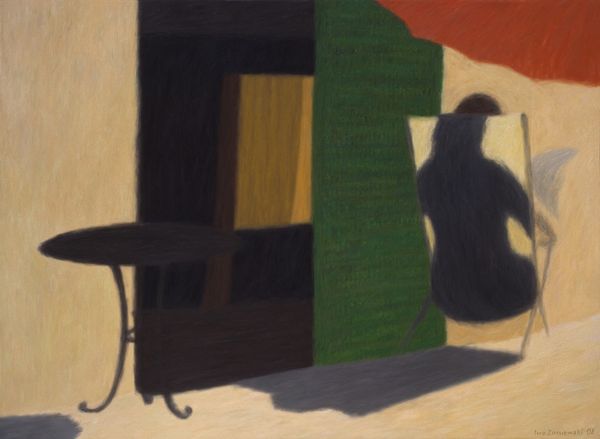
painting, oil-paint
#
portrait
#
painting
#
oil-paint
#
figuration
#
oil painting
#
intimism
#
expressionism
#
painting painterly
#
genre-painting
Copyright: Modern Artists: Artvee
Curator: Looking at Iwo Zaniewski’s “She’ll Return,” created with oil paint, what strikes you first? Editor: The sheer stillness, really. Despite the vibrant colours, there’s this profound sense of waiting, like a paused moment filled with unspoken emotions. The woman at the doorway especially, but even the furniture seems expectant. Curator: The painting style—with its blend of expressionism and intimism—really works to heighten that sensation. I’m drawn to the title. Considering how central the theme of genre-painting appears in his broader artistic focus, how do you perceive that connection unfolding? Editor: "She’ll Return" acts almost as an open-ended social commentary. In a history dominated by the portrayal of men in domestic settings, this role reversal shifts that perspective, placing a woman at the intersection of private and public spheres, suggesting new social roles post-war, perhaps. Curator: Absolutely, the home space transformed! I can’t help thinking about symbolic domestic images. Consider that mirror hanging on the wall. What narrative layer does it add in conjuring cultural expectations or memory of how a home "should be"? Editor: Mirrors have long signified self-reflection, truth, sometimes vanity. Here, its haziness obscures clarity—like a future unwritten or a past intentionally blurred. It denies the viewer, and perhaps the subject, an easy sense of self, a sharp visual confirmation. This challenges traditional iconography of women in the domestic space. Curator: It also reinforces a theme Zaniewski visits across his work, a figure leaving, just outside our reach—creating emotional tension and visual curiosity through absences. It mirrors psychological undercurrents from that era of social uncertainty and shifting conventions. Editor: So even in its ambiguity, it anchors a specific socio-historical moment—where the personal is undeniably political, particularly for women navigating evolving societal norms and self-conceptions. This era's art was deeply reflective, attempting to decode human experience in new cultural conditions. Curator: That feeling is quite powerful in this piece; seeing beyond the intimate sphere, it represents those transitional anxieties. It encourages us to confront the past and re-examine our present cultural memory, right? Editor: Definitely. I leaves us pondering the unseen, unheard narratives of countless women at historical junctures like this.
Comments
No comments
Be the first to comment and join the conversation on the ultimate creative platform.
